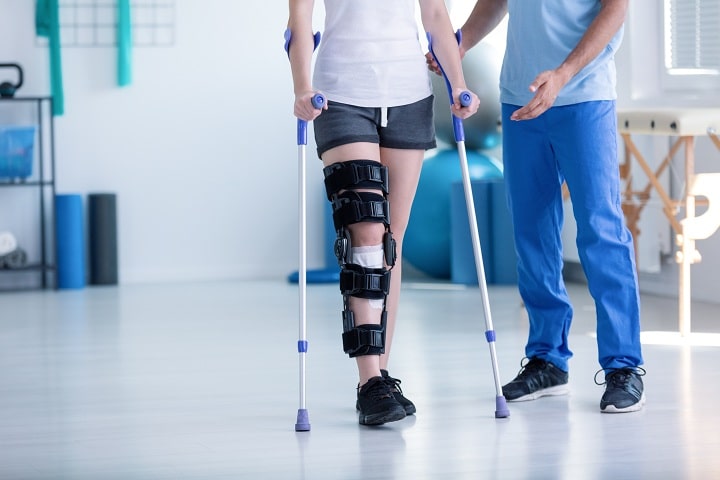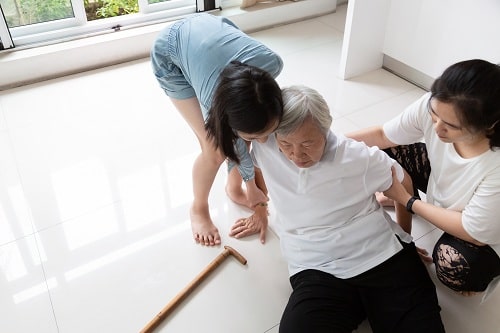So, you’re going about your day the same way you always do when suddenly your foot unexpectedly trips over something and you take a tumble to the ground? It’s okay, everyone experiences the accidental slip and fall at some point in their lives.
Most people would get back up and laugh it off, maybe dust their pants, and then continue with their day as usual. The accidental fall is often brushed off and survived with little more than a bruise that heals after a few days. But a minor bruise is not always the only injury sustained in a slip and fall accident.
Invisible and unnoticed long-term injuries can happen from slip and fall accidents. These have the potential to develop into unpleasant or even serious medical issues in the future, but they can be prevented if detected early enough.
If you or someone you know had a recent slip and fall accident, it’s advisable to look out for signs of any long-term injuries that could’ve occurred. These are five of the worst long-term injuries you should watch out for.
-
Head Injuries
Did your fall end with you taking a blow to the head? If that’s not the case you still might find yourself experiencing dizziness or headaches for some time, even several days after a slip and fall accident.
From slight concussions to serious brain trauma, head and brain injuries should always receive urgent medical care. Telltale signs to look out for include any form of swelling or bleeding anywhere on your head. Even a brief moment of unconsciousness is a sign that you should seek medical attention from a licensed practitioner.
Head injuries are serious medical cases that can result in serious injuries and life consequences. Care for such injuries can also prove costly. If your slip and fall head injury occurred in unsafe conditions in an environment that should’ve been monitored, such as a workplace, you may want to seek legal advice, especially if you need to seek brain injury compensation.
-
Soft Tissue Injuries
Soft tissue injuries refer to tendon and ligament injuries, which commonly occur in wrist and ankle sprains. These types of injuries generally restrict your mobility and can become too painful if you cannot help moving the affected area.
Mild soft tissue injuries can sometimes be treated at home and heal without issues that may require a visit to a doctor. Measures can be taken to reduce the pain, but if you experience any severe or increasing pain in a soft tissue injury, it’d be best to get immediate medical attention. Untreated soft tissue injuries have the potential to grow into serious problems and might develop into chronic pains that persist for years.
-
Spinal Cord Injuries
Like brain injuries, spinal cord injuries are commonly caused by slip and fall accidents. They’re also some of the most serious and lifestyle-threatening injuries one can endure.
The spinal cord is like the shell of the body’s nervous system. It’s the central path that all nerves in your body travel through. Injury and trauma to the spinal cord can damage the nervous system and result in compromised mobility, loss of certain senses, and improper bodily function.
Fortunately, there are ways to treat spinal cord injuries. You may be interested in reading more about different spinal cord injuries and treatments.
-
Broken Bones
Slip and fall accidents can give you a broken or fractured bone. However, mild bone breaks and fractures sometimes get misdiagnosed or mistaken for mild pain or bruising.
Common symptoms of a mild fracture include discoloration of the skin, pain, and tenderness to the touch. Bleeding, swelling, and immobility are more serious signs that should not be ignored! More extensive bone fractures will require immediate surgery to fix can be accompanied by soft tissue injuries that might require therapy.
-
Open And Bleeding Wounds
Examples are cuts, grazes, and abrasions. Open wounds might require stitches but are usually able to heal relatively quickly and rarely will classify as a long-term injury. However, open wounds resulting from a slip and fall accident are often signs of an underlying injury that may result in long-term complications, including some of the injuries listed above.
If you’ve experienced any open wounds from a slip and fall, consider that if a fall could cause a cut, it could also cause impact trauma to connected areas. Pain from any underlying injuries might be taken as pain spreading from the open wound, so carefully monitor your symptoms, and if you feel you need to visit a doctor, do it immediately.
Conclusion
Sometimes an injury is clear, other times not so much. A slip and fall accident aren’t always as innocent as it may first seem to be. Brushing this type of accident aside without paying attention to any side effects that you may have suffered can become a mistake that you’ll never realize you’ve made. As you can see, these falls can be the root cause of many potential long-term injuries that affect your life in the long run.
Knowing when to seek medical help is simply a matter of educating yourself on the potential repercussions of slip and fall accidents. The ability to identify when an accident requires the eye of a medical professional can save you or someone else from experiencing future troubles!



















